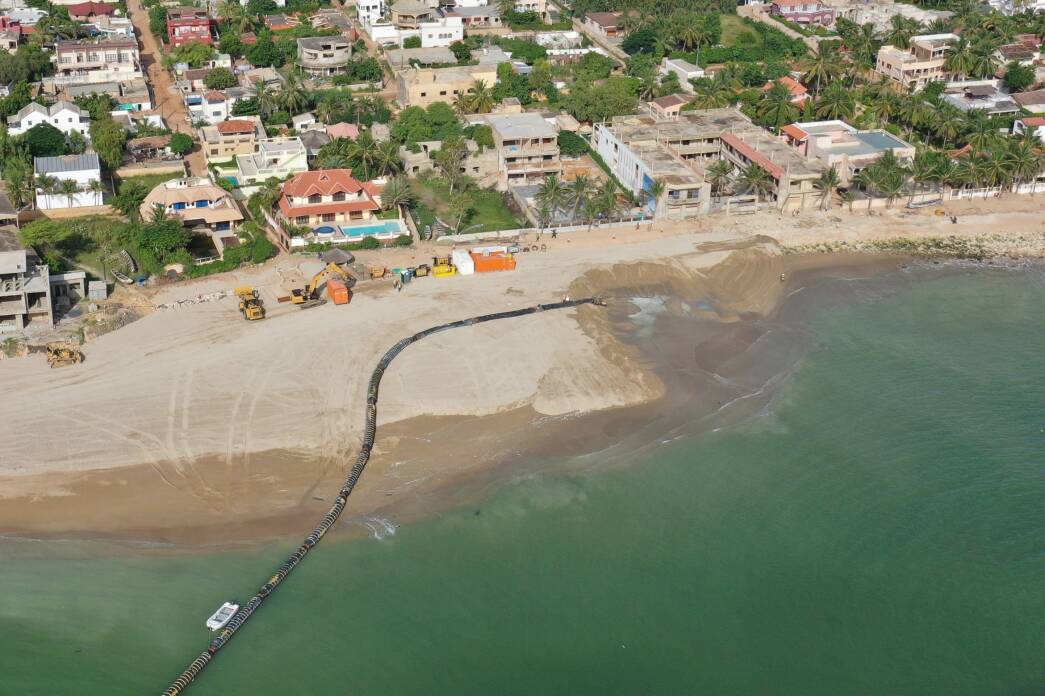Finished project
sustainable
Creating a safe and
coastline
for Saly
Van Oord’s Climate Risk Overview shows that many places along the African west coast have been weakened by erosion. One of those places is Saly.
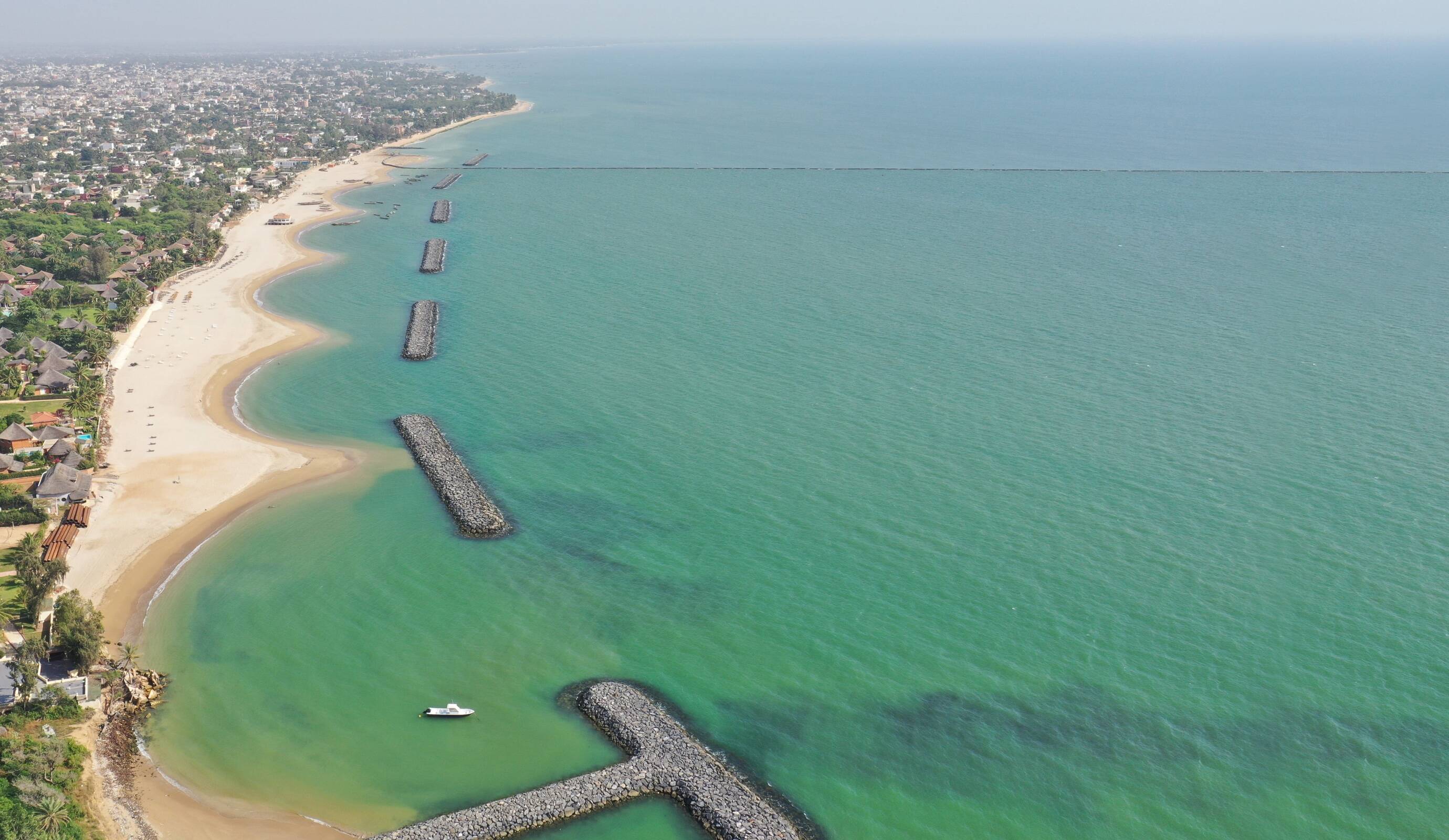

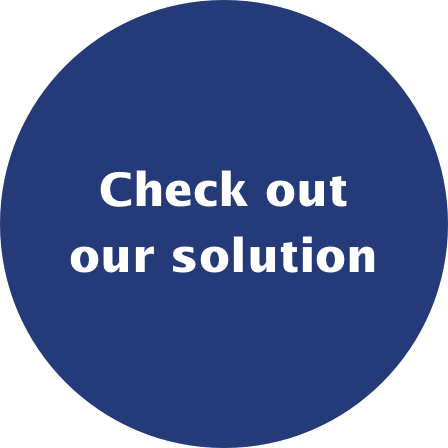

Do you want to find out more about our solutions to protect land and communities against rising water levels?
Other solutions

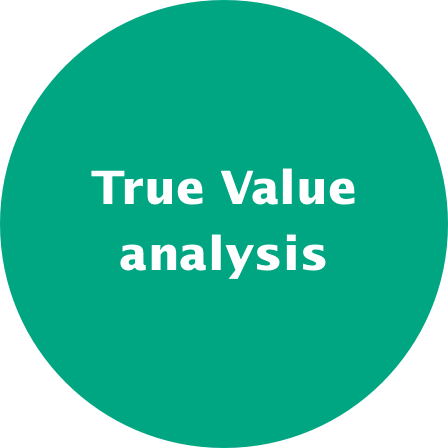

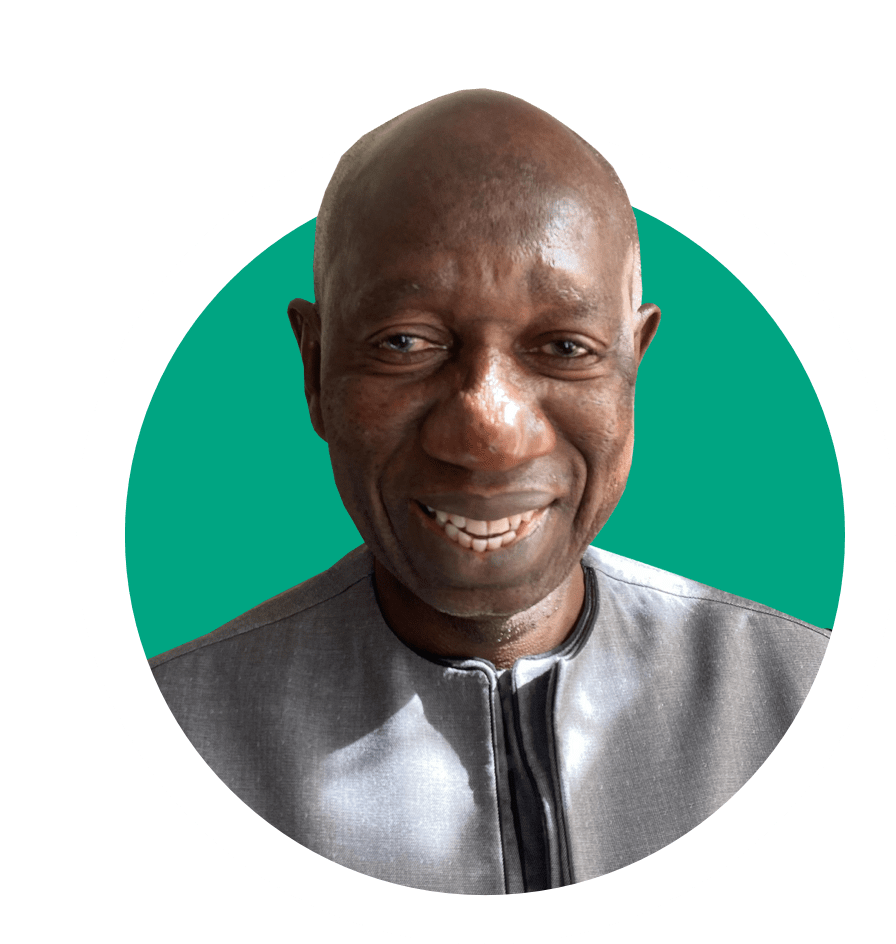
‘Climate adaptation measures such as coastal protection have consequences for the environment and society. Their impact can be both negative and positive. Negative effects must be minimised or mitigated, and positive effects maximised. By applying the True Value tool, Van Oord is able to demonstrate that a project not only delivers a safe coastline but also creates societal value. Value creation of this kind is a cornerstone of Van Oord’s climate adaptation plan.’
Govert van Oord,
Managing Director
Dredging at Van Oord

‘The beaches of Saly were eroding, leading to a decline in tourism and the corresponding revenue as beaches disappeared and hotels closed down. This reinforcement project was essential to improving the quality of life for the inhabitants and the local community.’
Colonel Diallo,
Director of APIX
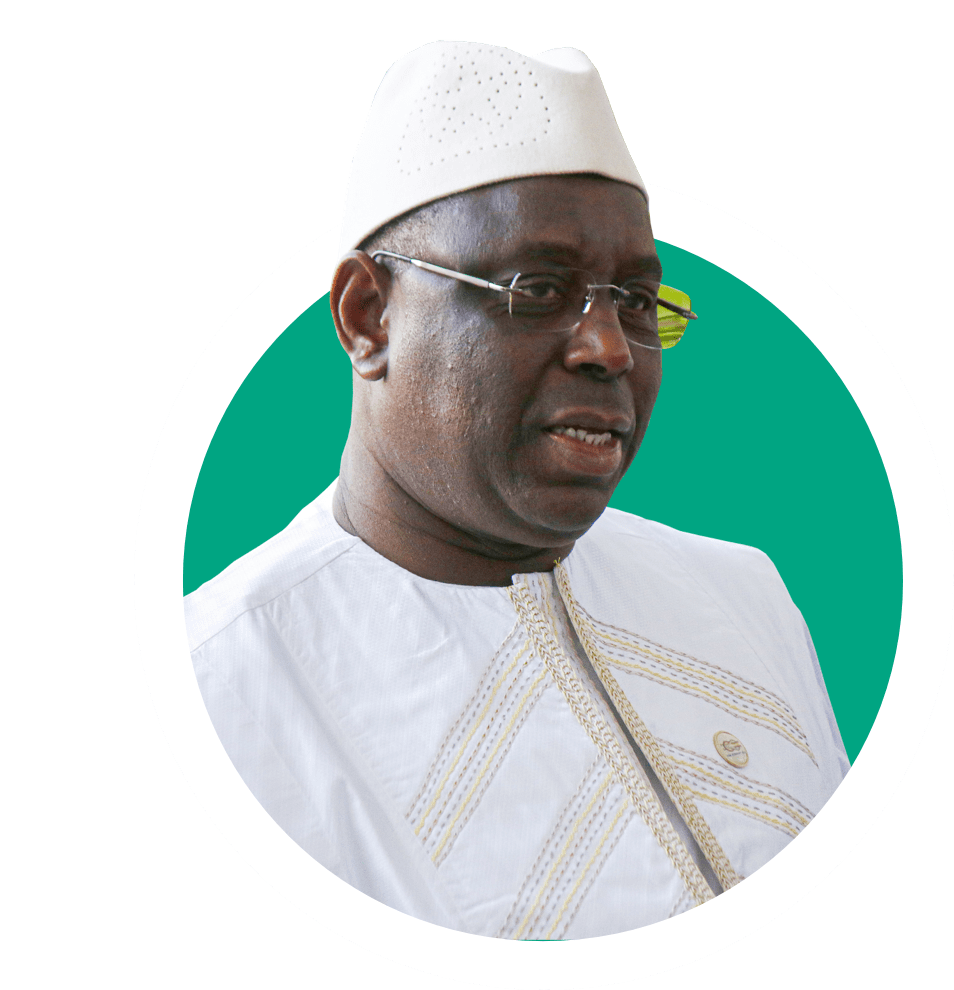
‘In light of our struggle against coastal erosion, a recent lighthouse project with the World Bank has enabled the safeguarding of a significant coastal area. The restoration of beaches in the area has saved 17 hotels and other activities linked to tourism and fishing.’
Mr Macky Sall,
President of Senegal
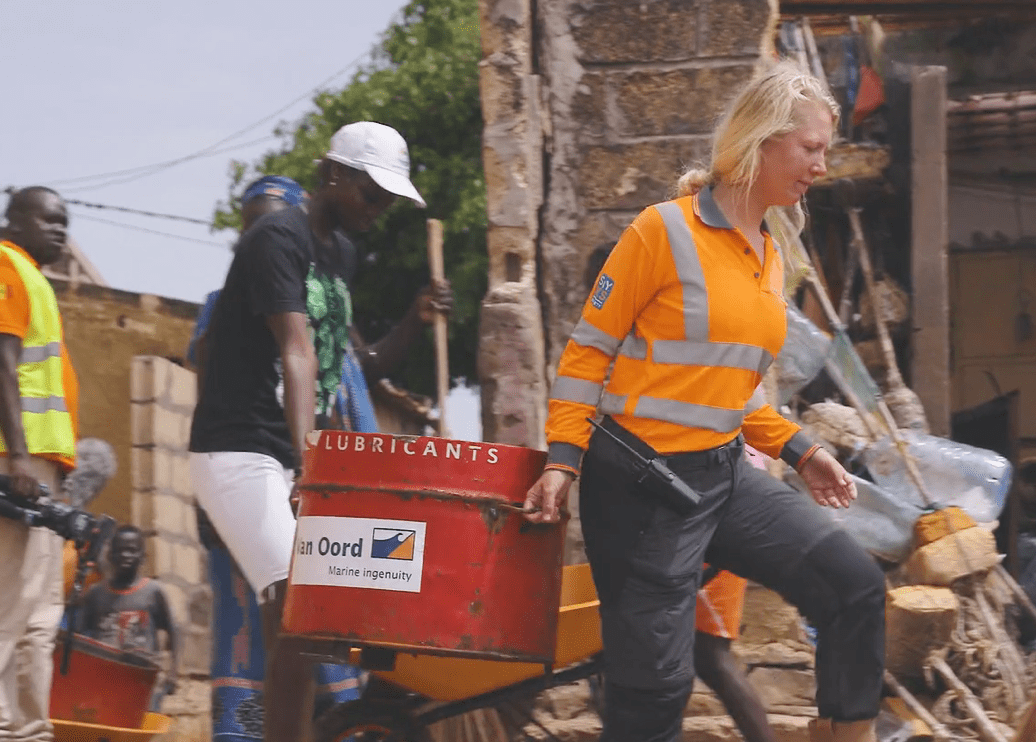
In addition to the forces of nature, human interventions have also weakened the coastal defence, like the construction of a small craft harbour and groynes upstream of the beaches, disturbing the longshore sand transport and deposit downstream along Saly’s coast. Van Oord was called in to reinforce and revitalise the coastline.
Revitalise the coastline
Saly is the beating heart of the Senegalese tourist industry on the Petite Côte. Tourism is the main source of income for its 20,000 inhabitants. Over the past few decades, however, beach erosion has driven away the tourists. Hotels have shut down and corresponding revenues disappeared, with disastrous economic consequences.
Beach erosion
This Senegalese town used to be a popular tourist destination in Africa – until the natural forces of the Atlantic Ocean, driven by climate change, washed away its sandy beaches.
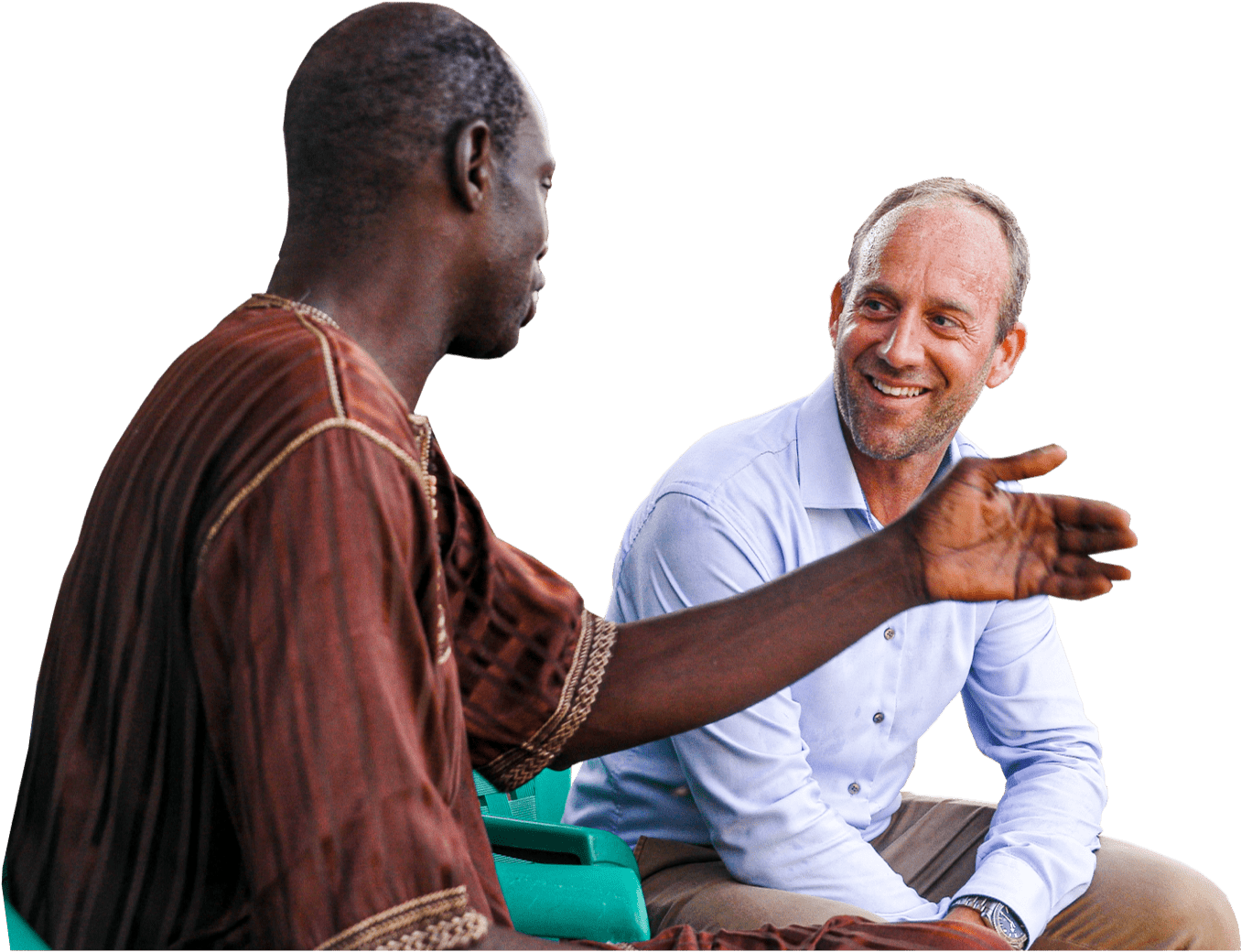

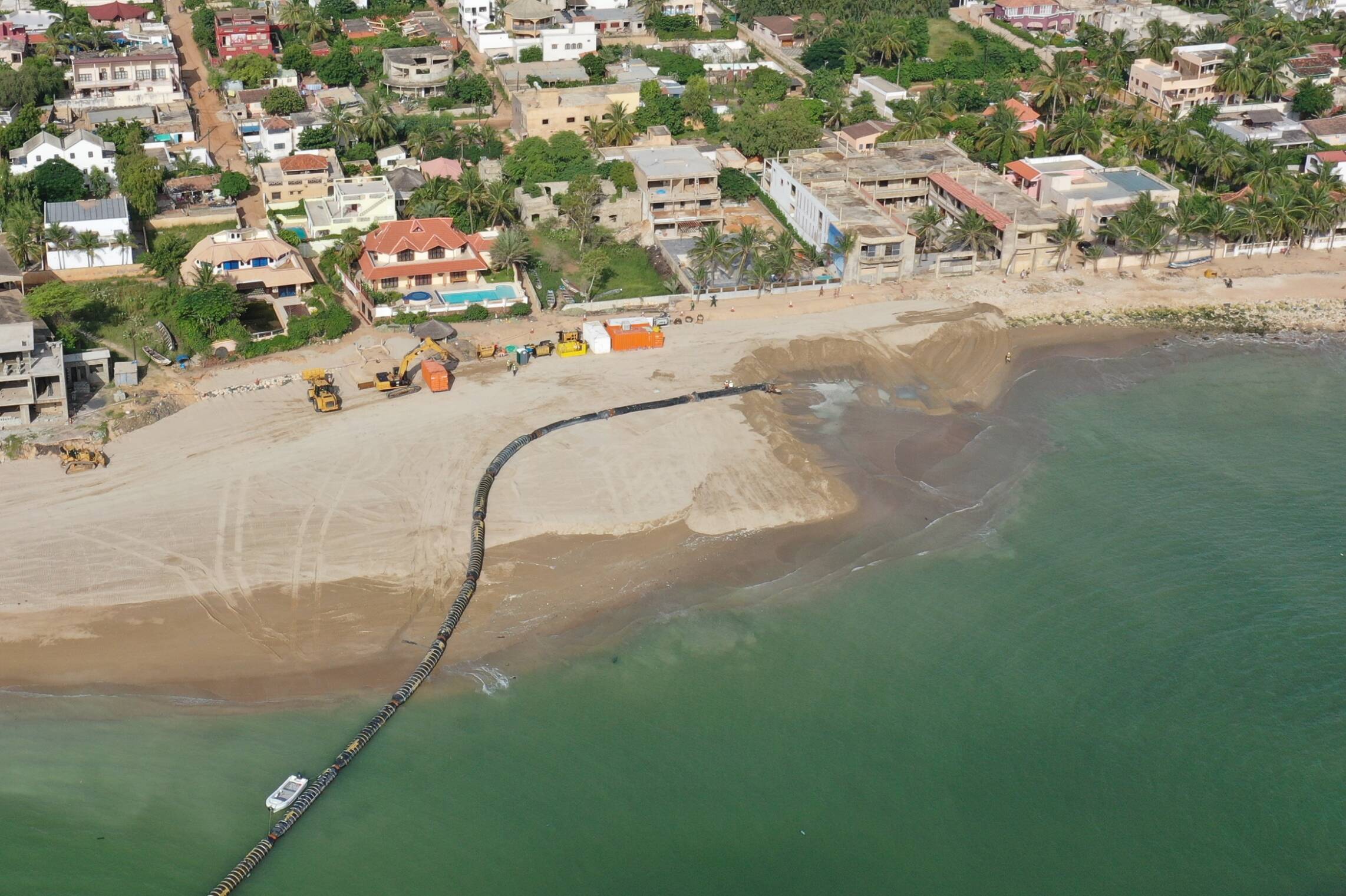
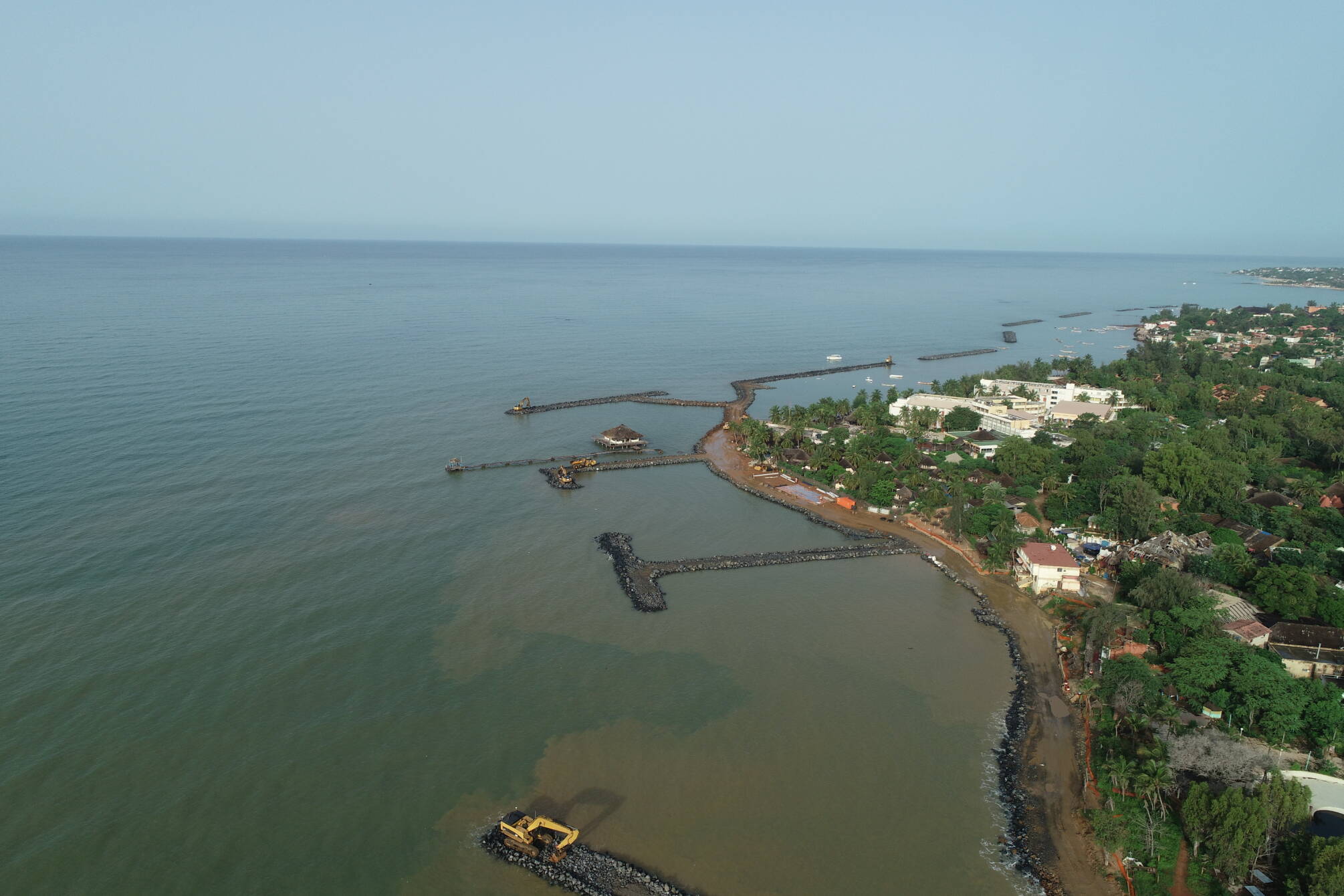
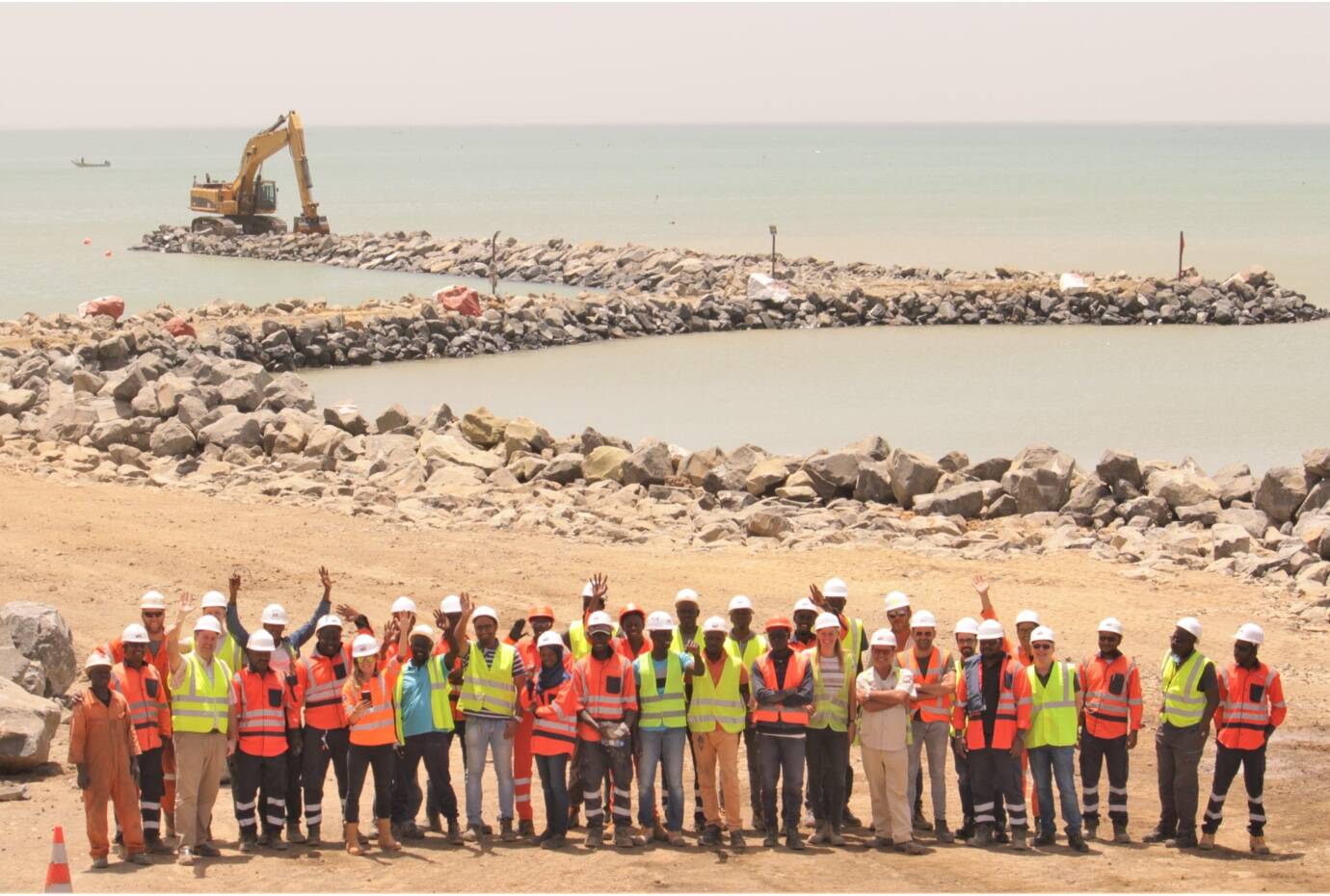
Van Oord also restored Saly’s golden beaches, deploying trailing suction hopper dredger Dravo Costa Dorada to dredge and deposit some 550,000 cubic metres of sand for a brand-new coastline.
‘We contracted a quarry nearby to deliver more than 300,000 tonnes of rock for the marine structures. The local economy benefited from this way of working,’ explains Regional Manager Maarten Meeder. ‘We also engaged regional subcontractors.’ The project team was eager to help Saly’s inhabitants make their living environment more sustainable and launched a public information project about plastic litter. ‘We placed rubbish bins at a large state school and talked to 800 schoolchildren about the risks that plastic litter poses to health and the environment. Afterwards, we rolled up our sleeves and collected plastic litter in the bins for recycling.’
To revitalise Saly’s fragile local economy and prevent flood damage, the World Bank financed a coastal protection scheme. Van Oord was selected to build groynes and detached breakwaters over a distance of 4.5 kilometres. These structures stop the currents and waves from battering the coastline and help to protect the land against rising sea levels.
Joining forces with the local community
By assessing our projects not only for their economic but also for their monetized social and environmental value, we can take informed decisions in both the engineering and execution phases. For example, will a certain decision or innovation create more value for society and/or the economy? Our calculations may lead us to rethink a project and to propose alternative solutions or working methods that are better for the client, stakeholders and/or local communities, and the environment.
Over the past few years, Van Oord has used the True Value method to measure the impact of its work on the Dutch Gemini offshore wind farm and the Moín container terminal in Costa Rica.
Companies are increasingly concerned about the impact of their operations and their value creation for stakeholders. So is Van Oord. We apply the KPMG True Value methodology to assess the positive and negative impacts of projects. The True Value tool measures and reports the value of a project for the environment and society. In late 2019, we used the tool to analyse the Saly coastal project and found that total value creation amounted to a net positive impact of almost USD 42.5 million.
Find out the true impact and value
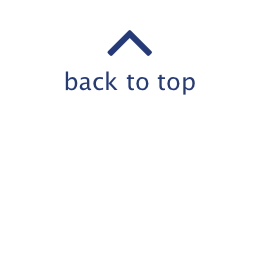
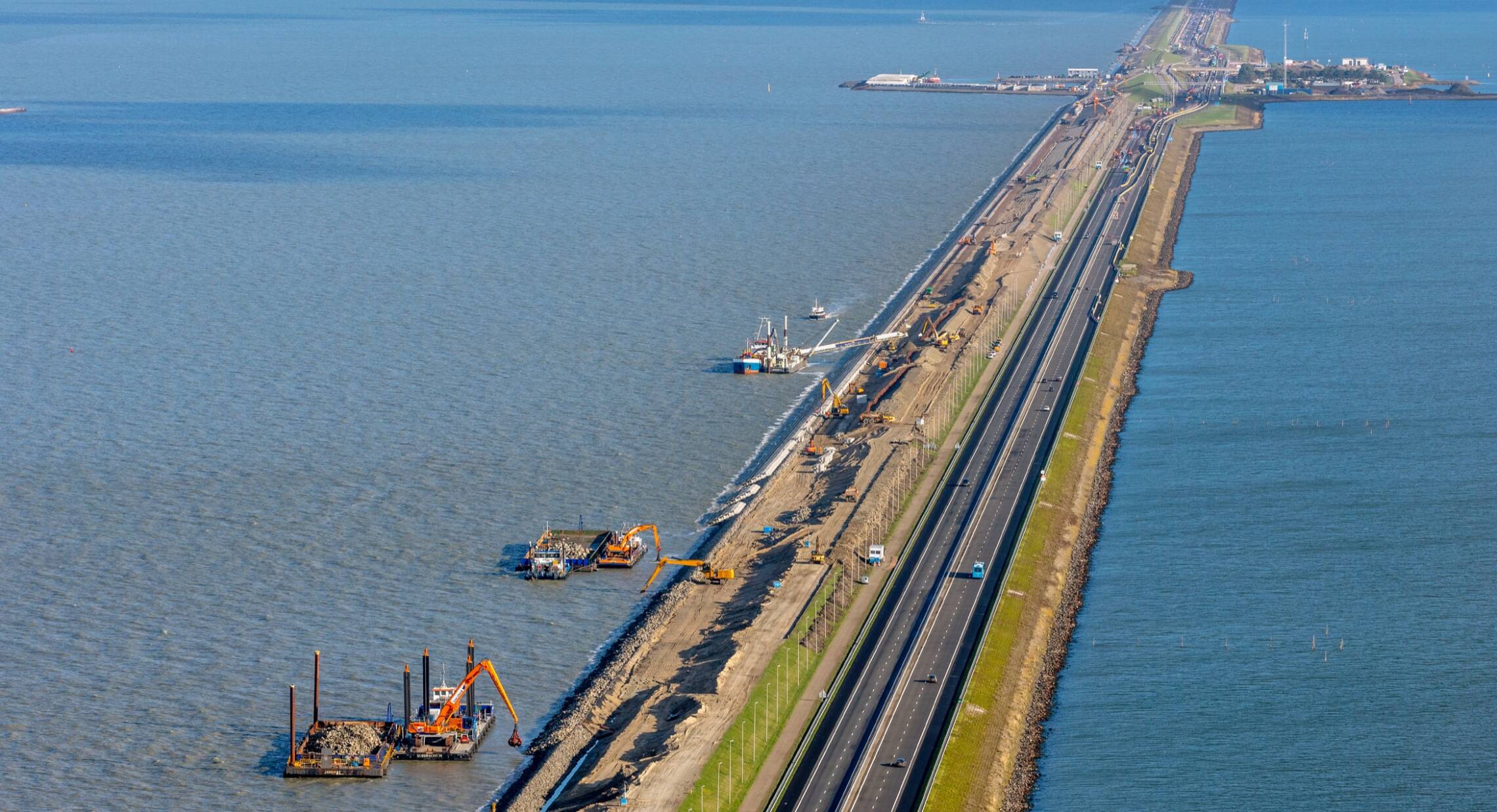
Van Oord’s Climate Risk Overview shows that many places along the African west coast have been weakened by erosion. One of those places is Saly.
for Saly
coastline
sustainable
Creating a safe and
Finished project
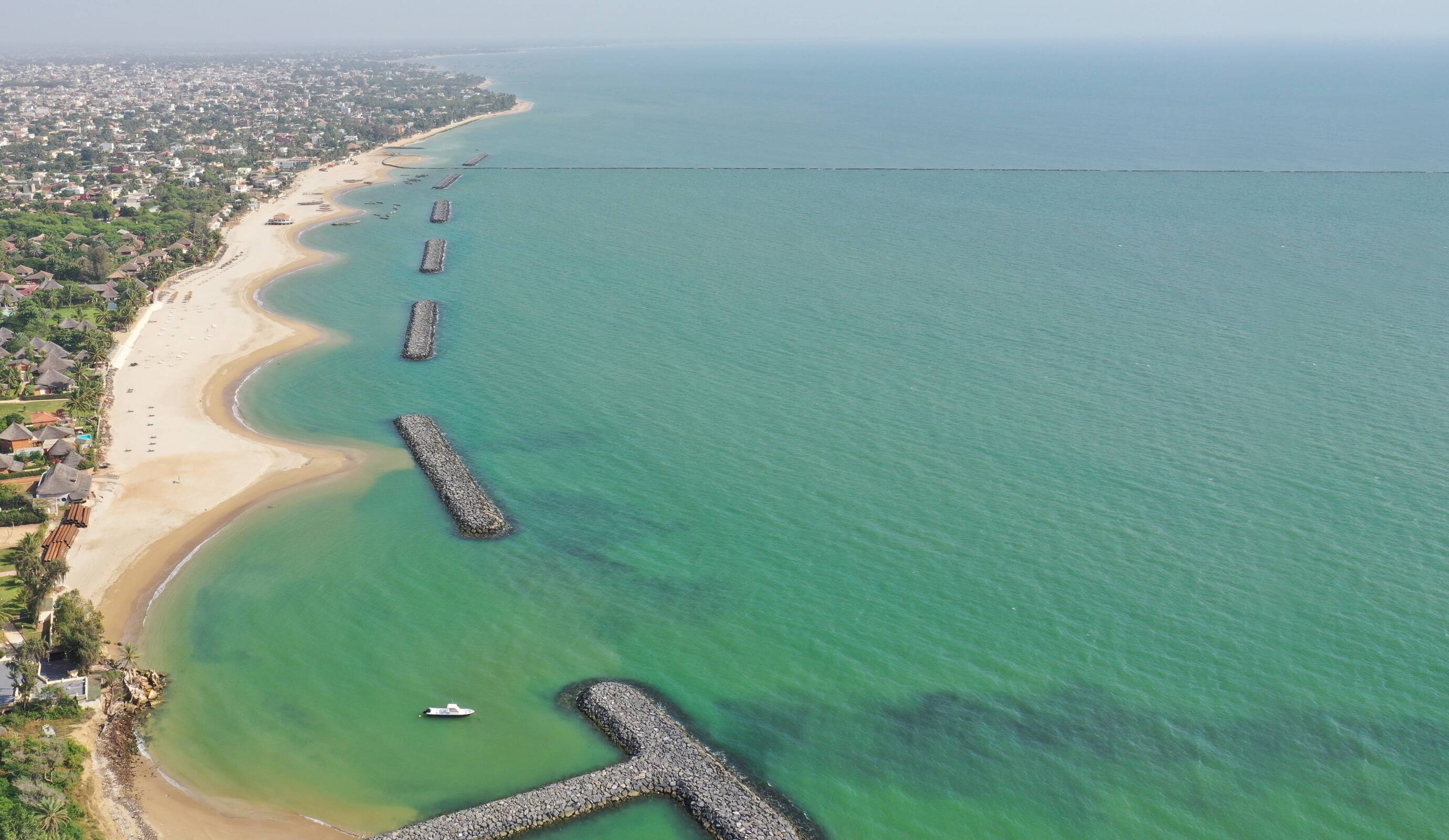

Do you want to find out more about our solutions to protect land and communities against rising water levels?
Other solutions
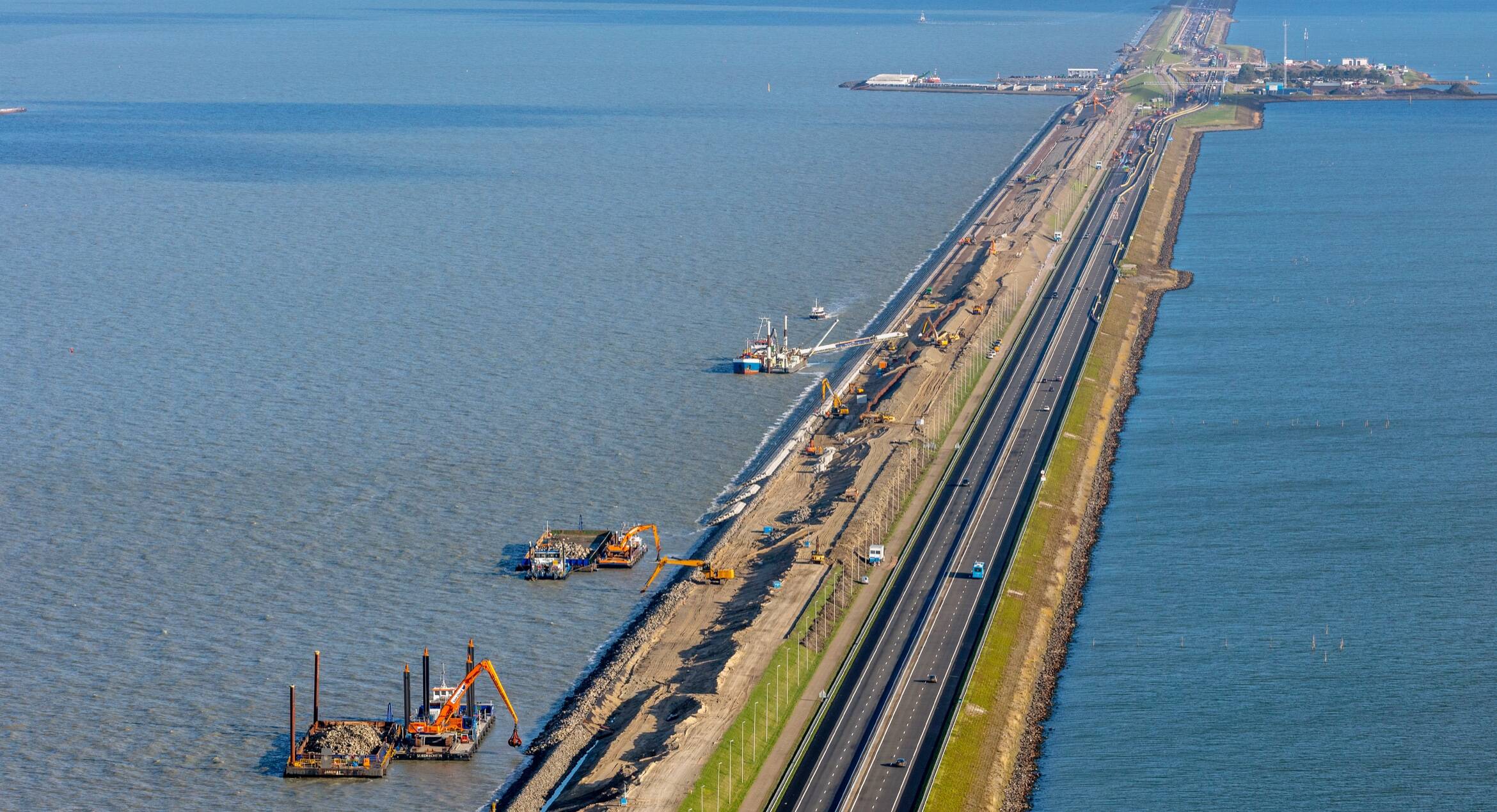
Over the past few years, Van Oord has used the True Value method to measure the impact of its work on the Dutch Gemini offshore wind farm and the Moín container terminal in Costa Rica.
‘Climate adaptation measures such as coastal protection have consequences for the environment and society. Their impact can be both negative and positive. Negative effects must be minimised or mitigated, and positive effects maximised. By applying the True Value tool, Van Oord is able to demonstrate that a project not only delivers a safe coastline but also creates societal value. Value creation of this kind is a cornerstone of Van Oord’s climate adaptation plan.’
Govert van Oord,
Managing Director
Dredging at Van Oord
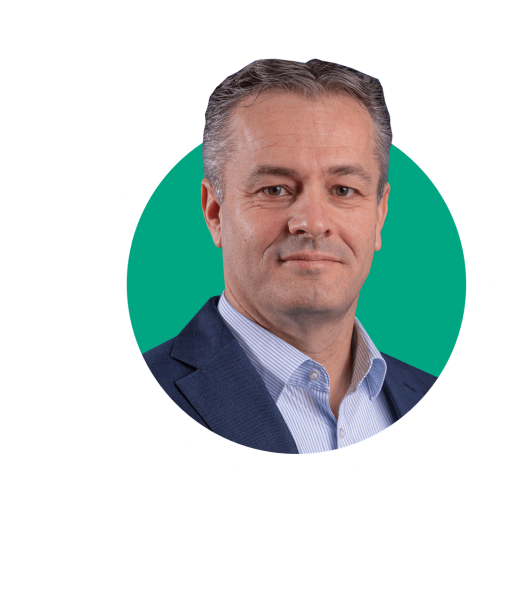


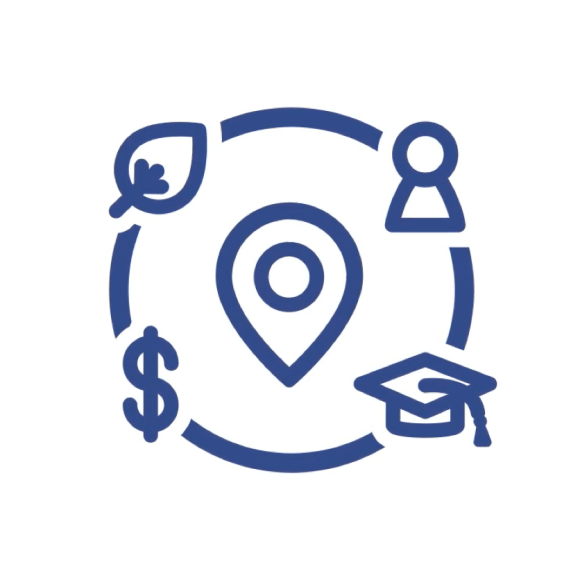
By assessing our projects not only for their economic but also for their monetized social and environmental value, we can take informed decisions in both the engineering and execution phases. For example, will a certain decision or innovation create more value for society and/or the economy? Our calculations may lead us to rethink a project and to propose alternative solutions or working methods that are better for the client, stakeholders and/or local communities, and the environment.
Companies are increasingly concerned about the impact of their operations and their value creation for stakeholders. So is Van Oord. We apply the KPMG True Value methodology to assess the positive and negative impacts of projects. The True Value tool measures and reports the value of a project for the environment and society. In late 2019, we used the tool to analyse the Saly coastal project and found that total value creation amounted to a net positive impact of almost USD 42.5 million.
Find out the true impact and value
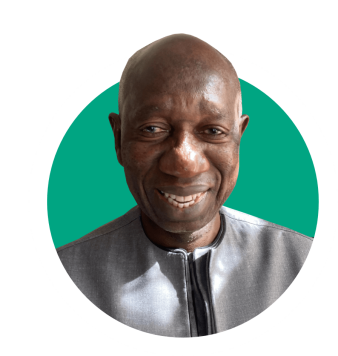
‘The beaches of Saly were eroding, leading to a decline in tourism and the corresponding revenue as beaches disappeared and hotels closed down. This reinforcement project was essential to improving the quality of life for the inhabitants and the local community.’
Colonel Diallo,
Director of APIX
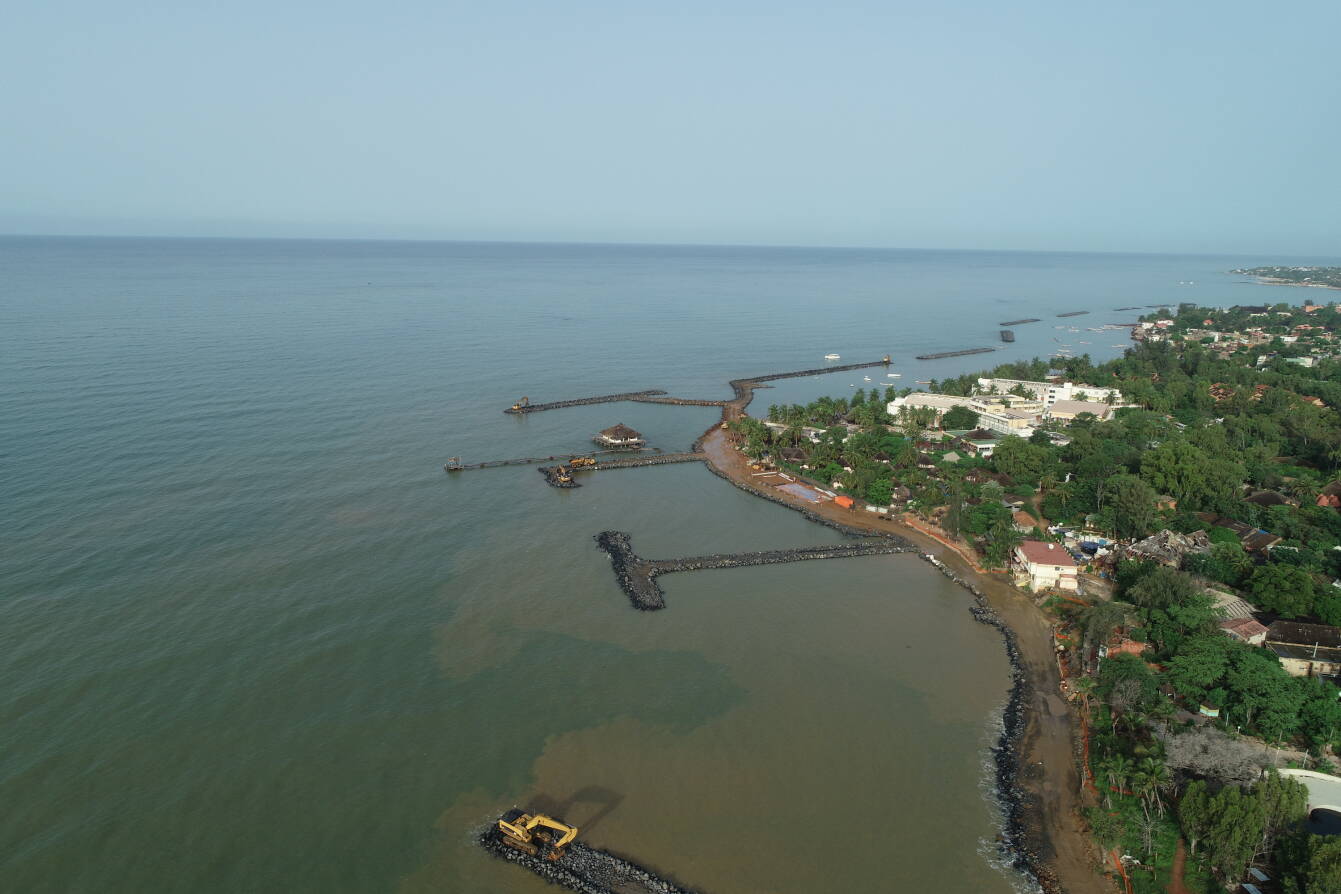
Van Oord also restored Saly’s golden beaches, deploying trailing suction hopper dredger Dravo Costa Dorada to dredge and deposit some 550,000 cubic metres of sand for a brand-new coastline.
‘We contracted a quarry nearby to deliver more than 300,000 tonnes of rock for the marine structures. The local economy benefited from this way of working,’ explains Regional Manager Maarten Meeder. ‘We also engaged regional subcontractors.’ The project team was eager to help Saly’s inhabitants make their living environment more sustainable and launched a public information project about plastic litter. ‘We placed rubbish bins at a large state school and talked to 800 schoolchildren about the risks that plastic litter poses to health and the environment. Afterwards, we rolled up our sleeves and collected plastic litter in the bins for recycling.’
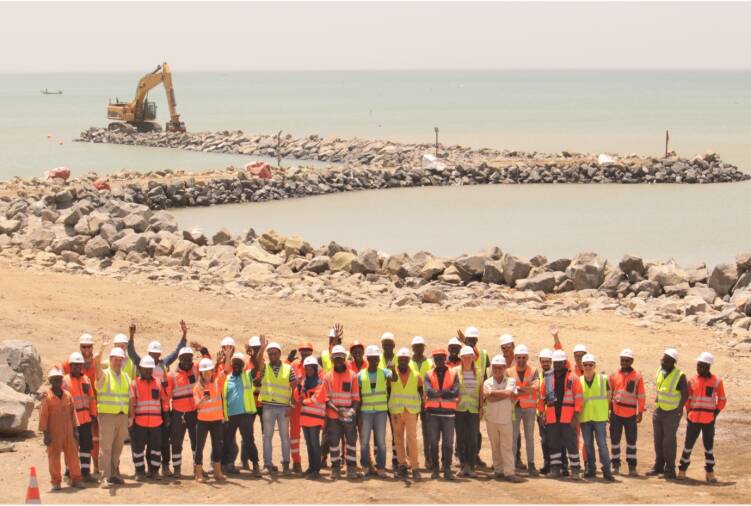
To revitalise Saly’s fragile local economy and prevent flood damage, the World Bank financed a coastal protection scheme. Van Oord was selected to build groynes and detached breakwaters over a distance of 4.5 kilometres. These structures stop the currents and waves from battering the coastline and help to protect the land against rising sea levels.
Joining forces with the local community

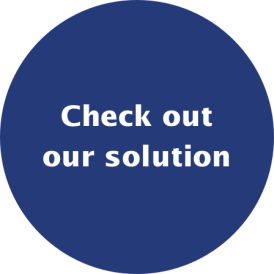
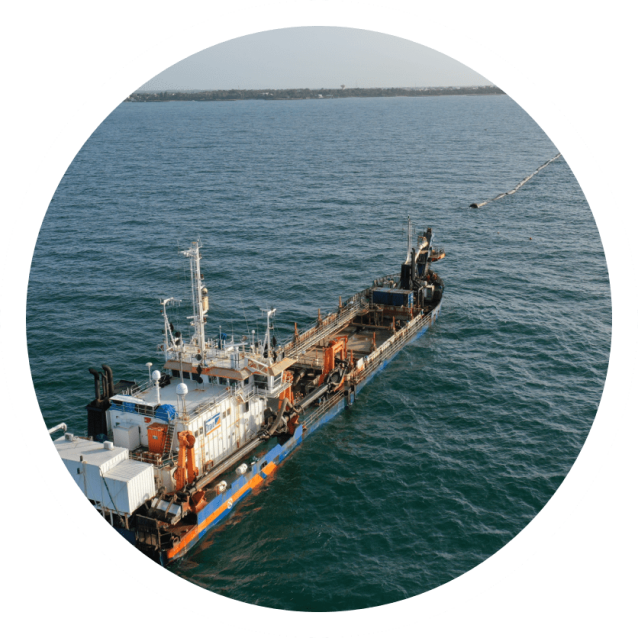
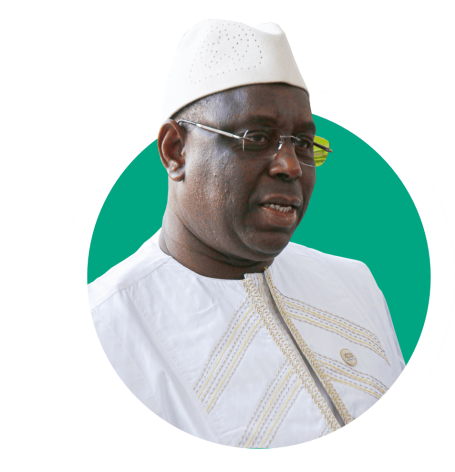
‘In light of our struggle against coastal erosion, a recent lighthouse project with the World Bank has enabled the safeguarding of a significant coastal area. The restoration of beaches in the area has saved 17 hotels and other activities linked to tourism and fishing.’
Mr Macky Sall,
President of Senegal
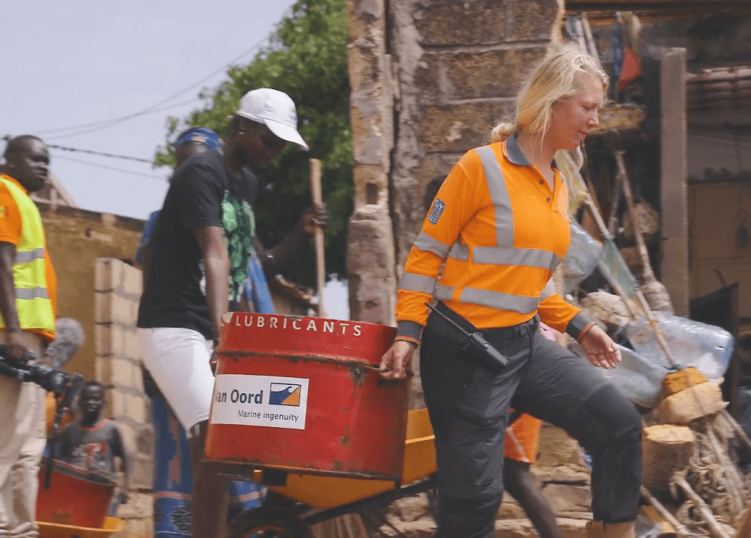
In addition to the forces of nature, human interventions have also weakened the coastal defence, like the construction of a small craft harbour and groynes upstream of the beaches, disturbing the longshore sand transport and deposit downstream along Saly’s coast. Van Oord was called in to reinforce and revitalise the coastline.
Revitalise the
coastline
Saly is the beating heart of the Senegalese tourist industry on the Petite Côte. Tourism is the main source of income for its 20,000 inhabitants. Over the past few decades, however, beach erosion has driven away the tourists. Hotels have shut down and corresponding revenues disappeared, with disastrous economic consequences.
Beach erosion
This Senegalese town used to be a popular tourist destination in Africa – until the natural forces of the Atlantic Ocean, driven by climate change, washed away its sandy beaches.


